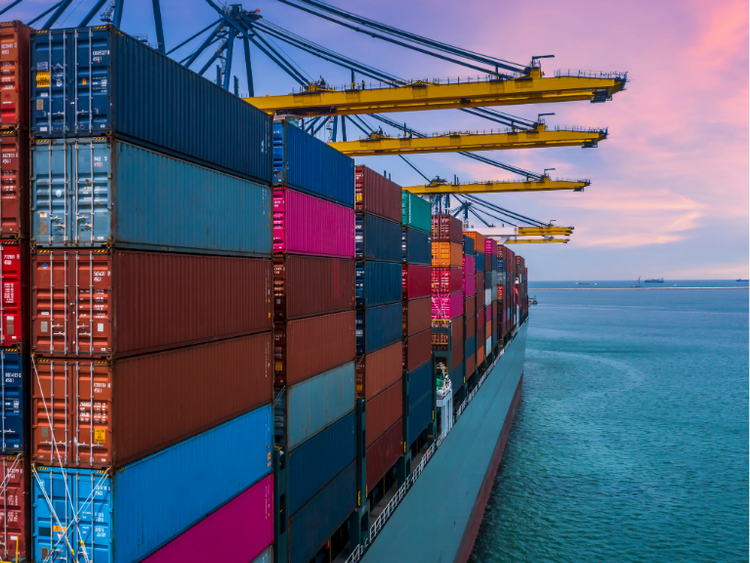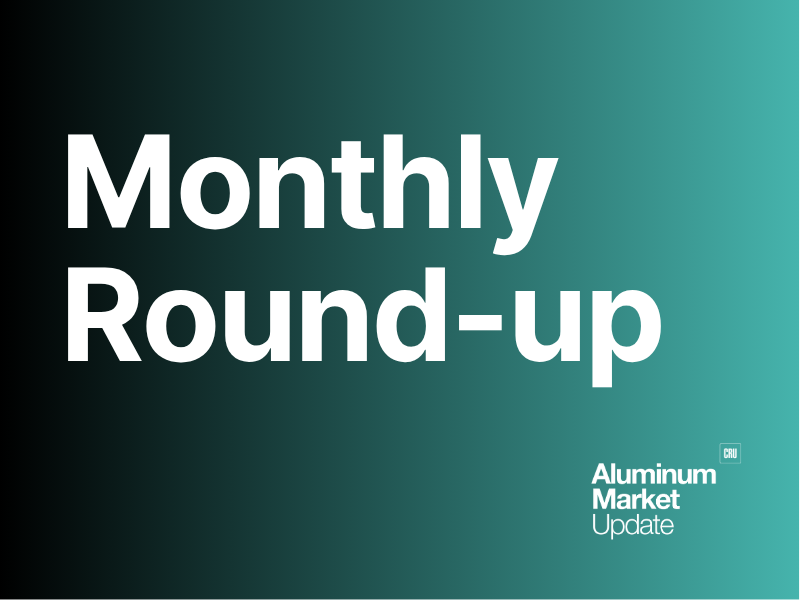Global Trade

June 5, 2025
AMU PATH Fireside Chat: Bottlenecks and backchannels in the freight market
Written by Nicholas Bell
The debut of Aluminum Market Update (AMU) fireside chat couldn’t have come at a better time; on the very day the U.S. doubled down on Section 232 tariffs on aluminum and steel.
AMU’s managing editor, Gabriella Vagnini, opened the session with a warm welcome and set the tone for what turned out to be a sharp, candid conversation.
Three sessions tackled the turbulence facing the aluminum market with insights from trade experts, downstream authorities, and CRU analysts.
Discussions kicked off with a conversation between AMU’s Greg Wittbecker and customs expert David Harlow, President of ITC Diligence International.
Here are a couple of narratives pulled from talking points of the first discussion.
Perfect port storm
Recent policy shifts via executive order have created deeper uncertainty in the customs brokering world. Previously, tariff enactments under Section 301 or 232 came with a 30-day notice from the U.S. Trade Representative office. Today, importers, brokers, and even Customs and Border Protection are finding out about trade changes at the same time as the public, leaving the compliance systems scrambling to catch up.
A major focal point of the conversation was a looming logistics bottleneck triggered by a rumored backlog of nearly a million containers currently stuck in China awaiting transport to the U.S. According to speakers, the container pile-up stems from a sharp and unexpected rebound in demand following a steep drop in port volumes earlier in the year.
In April and May, “the ports of LA and Long Beach have seen a 30 to 40% drop in port volume”, said Harlow. But while the excess capacity in ports of Los Angeles and Long Beach, where Harlow’s company primarily operates, might appear to offer relief, importers are instead bracing for renewed congestion.
Unlike in 2024, when those same ports quietly handled record-high container volumes, even surpassing COVID-era peaks of 2021-2022, the conditions this time are different. Back then, improved port infrastructure and a healthy labor force allowed record throughput with no major delays. Today, the disruption is coming not from port inefficiency, but from the misalignment of global shipping assets.
During this year’s lull, vessels had been repositioned to other trade lanes during that lull, and shipping lines are struggling to realign assets now. The anticipated result is capacity shortfalls and delayed sailings, already seen with container rates already climbing from $2-3,000 per box last month to potentially as high as $8,000 by the end of this month.
That congestion is likely to worsen with a controversial new policy set to take effect on October 14, 2025: a U.S. port entry fee targeting Chinese-owned or operated vessels will face a $50 per net ton, per port “rotation” fee. As described in the session, this could completely reshape how these ships route their cargo, incentivizing them to reduce the number of U.S. ports they call.
Rather than hitting multiple ports on a loop, like Seattle-Oakland-Los Angeles and then Mexico, a vessel might now skip Seattle and Oakland entirely, calling only at Los Aneles to minimize the accumulation of fees.
A potential impact is a drop-off in traffic at secondary ports coupled with a surge in traffic at mega-ports.
Foreign Trade Zones flexibility
Another key takeaway was that Foreign Trade Zones (FTZs) are becoming an essential strategy in an increasingly protectionist U.S. trade environment.
In a Foreign Trade Zone environment, you can bring goods into your warehouse – or a third-party warehouse established as a Foreign Trade Zone – without paying duties or tariffs upfront, giving you greater flexibility in managing costs and cash flows.
FTZs allow you to keep identified, duty-paid inventory warehoused indefinitely, unlike the 5-year term limit with bonded warehouses, as the repositories are established outside of the U.S. customs jurisdiction, even when located in the country.
Goods with a final destination outside the U.S. are still able to be transported through the U.S. without having to meet U.S. compliance requirements as well. For example, a trader may move Canadian aluminum by train through the U.S., taking advantage of better rail infrastructure, destined for Mexico without having to pay tariffs on the material or meet U.S. customs clearance requirements.
Conversely, foreign trade zones make it possible to correct misreported country-of-origin markings or mislabeling back into compliance before clearing through customs.
Between tariffs, port entry fees, as well as the pure pass fees, clean truck fees, congestion fees that could be added on top, having the flexibility to determine compliance ahead of clearing imports through customs is a huge benefit of FTZs.
From turmoil to tactics
The session made one thing clear: policy is shifting faster than infrastructure can keep up. Between container realignments, software strain at Customs, and the increasingly blurred lines between foreign trade and enforcement, companies that move aluminum (or anything else) will need smarter navigation.
As the tariff landscape becomes more convoluted, Foreign Trades Zones are moving from a niche to a frontline defense for supply chain stability.







